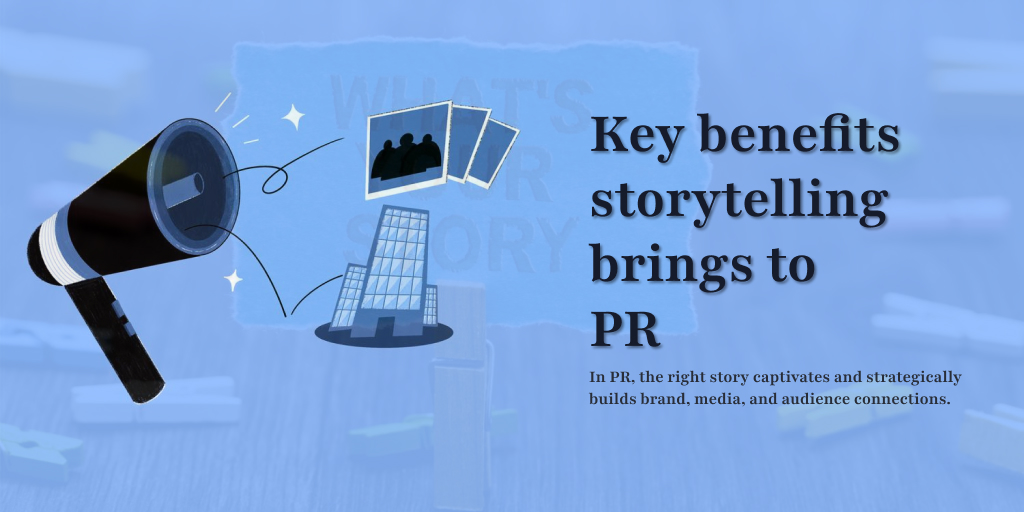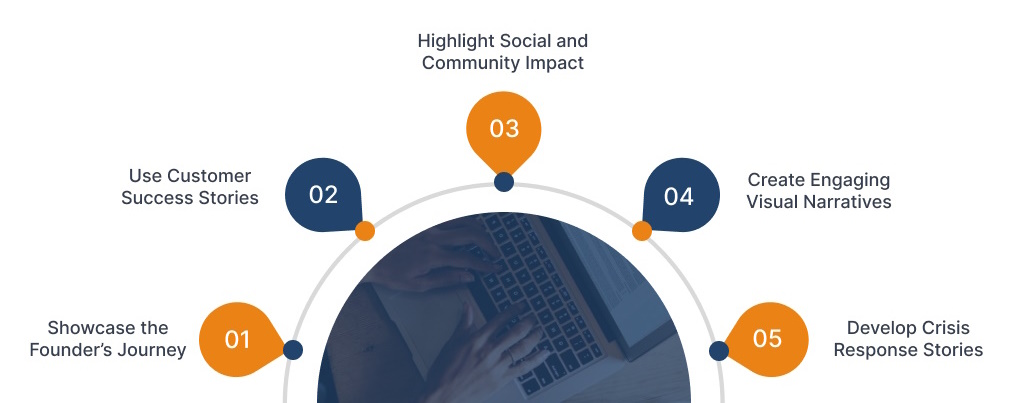Why Storytelling is Essential in PR: Building Connections and Shaping Perception
Storytelling lies at the core of effective PR, helping brands connect with their audience on a deeper level. A well-told narrative about a brand founder's journey, a customer's success story, or a public initiative shapes perceptions and leaves a lasting impact.
This article explores why storytelling is critical in PR and how it strengthens relationships while driving meaningful engagement.
How Storytelling Strengthens PR Efforts
Storytelling elevates PR by transforming communication into genuine connections. The right narrative makes a brand relatable, creating material that resonates and has a long-lasting impact.
It helps build trust, spark emotions, and demonstrate authenticity. Whether highlighting a founder’s journey, customer encounters, or challenges overcome, masterful storytelling shapes perceptions and fosters loyalty. It’s not just about promotion—it’s about inviting people into a journey they want to join.
Benefits of Storytelling in PR
In PR, the right story does more than captivate—it serves as a strategic tool for brand building, media engagement, and audience alignment. Here are the key benefits storytelling brings to PR:

- Differentiates the Brand in Crowded Markets: Unique narratives help brands stand out. Storytelling allows PR teams to showcase a brand's value through its journey, purpose, and impact. This distinction is vital for creating a clear identity that drives media engagement. Journalists, always seeking compelling stories, are more likely to respond to a narrative-driven pitch than a generic press release.
- Strengthens Public and Customer Loyalty: Stories that reflect brand values foster public trust. Whether it’s a customer success story or an environmental initiative, storytelling enables brands to connect with like-minded audiences, creating a community of supporters.
- Builds Trust through Transparency: Storytelling allows brands to openly share their values and practices. Genuine narratives build trust in a world where transparency is increasingly valued.
Essential Storytelling Techniques for PR Professionals

1. Showcase the Founder’s Journey
Founder stories add a personal touch to the brand. They highlight the values and vision that drive the brand, making it relatable and inspiring.
How to Apply: Share insights into the founder's struggles, pivotal moments, and inspirations. Highlight how these experiences shaped the brand’s mission and customer-centric approach.
2. Feature Customer Success Stories
Customer success stories serve as powerful social proof. They demonstrate how the brand positively impacts real lives.
How to Apply: Go beyond generic testimonials. Focus on a customer’s journey—their challenges, the solutions provided by your brand, and the outcomes.
3. Highlight Social and Community Impact
Audiences connect with brands that contribute to society. Showcasing social initiatives fosters alignment with purpose-driven audiences.
How to Apply: Share stories about the brand’s community outreach or sustainability efforts. Emphasize real-world impacts to reinforce the brand’s commitment to meaningful change.
4. Leverage Visual Narratives
Visual elements make stories more engaging and memorable. Photos, videos, and infographics transform static information into dynamic narratives.
How to Apply: Use behind-the-scenes images, short videos, or infographics to enhance storytelling. Showcase events, processes, or team dynamics to build a relatable brand image.
5. Develop Crisis Response Stories
Challenges are inevitable, but how brands handle adversity shapes their reputation. Storytelling during crises demonstrates accountability and resilience.
How to Apply: Create narratives around the brand’s response to crises, emphasizing the steps taken, the outcomes, and the lessons learned.
Evaluating the Effectiveness of PR Storytelling
- Monitor Audience Engagement: Track metrics like likes, shares, and comments to measure how well your story resonates.
- Analyze Website Traffic and Conversions: Review website visits and sales to assess the impact of storytelling campaigns.
- Evaluate Media Coverage: Analyze the volume and quality of media mentions to understand the reach and influence of your story.
- Conduct Sentiment Analysis: Use tools to gauge audience sentiment in comments and discussions.
- Gather Direct Feedback: Survey stakeholders and customers to understand how the story influenced their perception of the brand.
Gather Direct Feedback
Survey stakeholders or clients to get first-hand insights on how the story influenced their perception of the brand.
Conclusion: The Future of Storytelling in PR
Storytelling in PR is ever-evolving, driven by changing technologies and audience needs. As brands strive to connect in a digital world, honest and relatable stories are essential.
Future storytelling may integrate immersive tools like augmented reality or data-driven content. By staying creative and transparent, brands can build trust, shape opinions, and foster lasting relationships with their audience.

